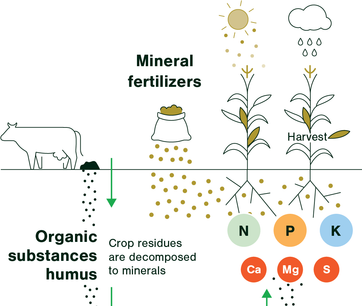Address: Tudor Vladimirescu 22, Bucharest, Romania.
Phone: +40 745 567321
AKTIV GREEN TECH
SUCCESS STARTS WITH US
Fertilizers - silicic acid stabilized products
There is an urgent need to improve the agricultural technologies. Agriculture has changed dramatically since 1945. Increased usage of mechanization, chemical-based fertilizers and agro-chemicals were favored hoping to maximize the production and increase yields.
These practices produced higher yields with the cost of decreasing the mineral content over the last 70 years. This has resulted in weaker plants with a higher susceptibility for biotic stress facets like diseases and pests. To overcome these problems more agro-chemicals (like pesticides) are used resulting in side-effects such as soil degradation, disturbing the microbial equilibrium, groundwater contamination, negative impact on the living and working conditions of farm laborers and their neighbors and effects on the food-chain such as the contamination of fruits with chemical residues and pesticides.
The world population is growing. The UN resource projections for 2030 estimate that 50% more food will be needed.
Also, there is a sharp increase in arable land being used for energy crops. A sustainable method of increasing food and energy crop production is needed.
Our technology can overcome these challenges. Usage of our products will produce a combination of high yielding and nutritious crops using safe and eco-friendly agro-practices with the added value of cost-effectiveness. This results in the significant reduction in the usage of NPK-fertilizers and agro-chemicals like pesticides. Crop yields are higher and the quality and health of the crops are greatly improved.
At the end of last millennium silicic acid was sucessfully synthesized and stabilized. This scientific achievement marked the beginning of a new era of healthy plant growth through Silicic acid. Silicic acid is safe and can be used in a combination of formulas with other essential minerals or important nutrients. For instance, the synergistic effects when combined with boron are even more effective than silicic acid alone. Depending on crop type, other micro-nutrients are added such as Zinc (Zn up to 1,6%), Copper (Cu up to 0,25%) and Molybdenum (Mo up to 0,1%). Our formulas containing these micro-nutrients and silicic acid targeting specific plant families. All are registered as EC fertilizers.
Our silicic acid formulas are used mostly as leaf fertilizers. By using leaf application, silicic acid escapes from the many chemical reactions located within the soil and remains bio-active. Silicic acid is then absorbed by the leaf stimulating photosynthesis locally, regulating root growth from the top-down and therefore enhancing the uptake of nutrients.
Nitrogen fertilizers
Nitrate-based fertilizers are the most commonly used straight fertilizers in Europe.
The main products are nitrate-based fertilizers such as ammonium nitrate (AN) and calcium ammonium nitrate (CAN), which are well suited to most European soils and climatic conditions, and urea and urea ammonium nitrate (UAN) aqueous solution, which are widely used in other parts of the world.
Other straight nitrogen fertilizers include ammonium sulphate and ammonium sulphate nitrate, calcium nitrate, sodium nitrate, Chilean nitrate and anhydrous ammonia.
Phosphorus fertilizers
The most common phosphate fertilizers are single superphosphate (SSP), triple superphosphate (TSP), monoammonium phosphate (MAP), di-ammonium phosphate (DSP) and ammonium polyphosphate liquid.
Different fertilizer products have different release profiles and need different spreader settings for efficient application.







